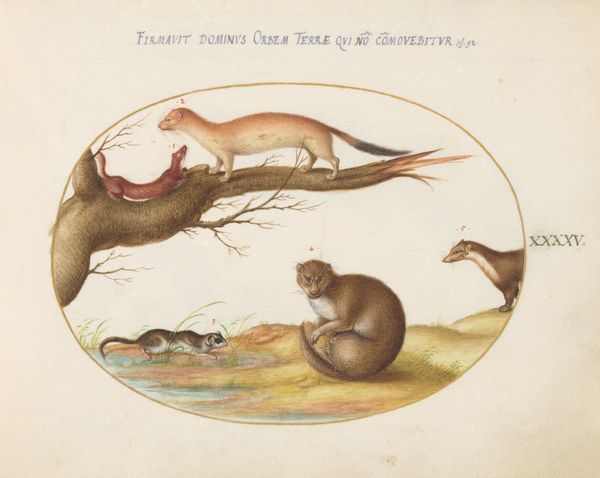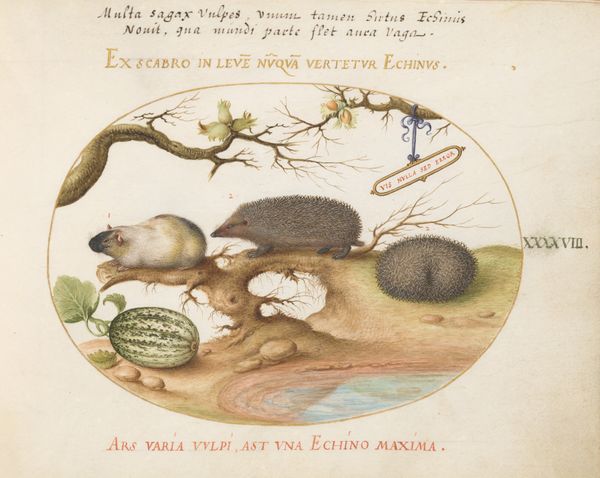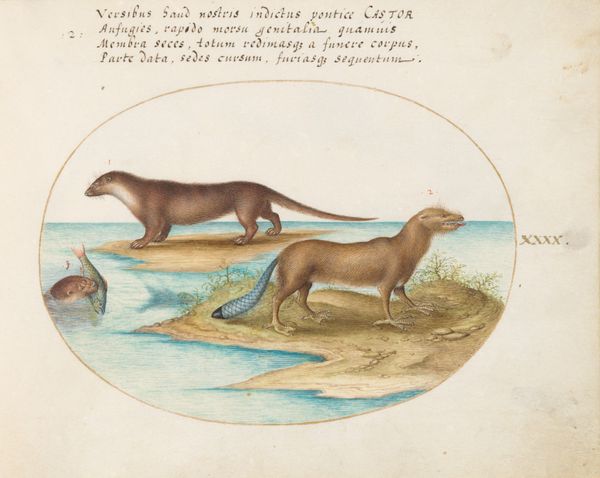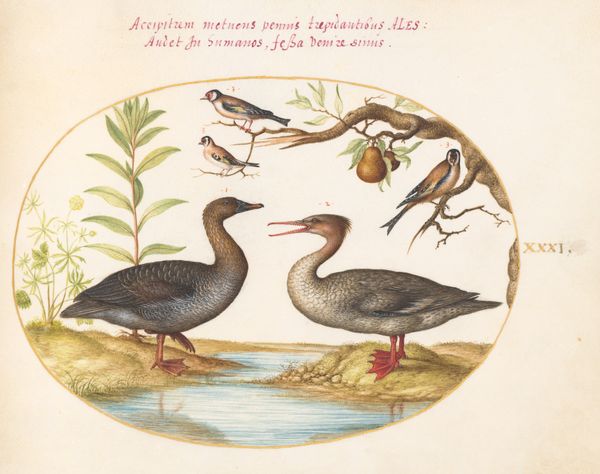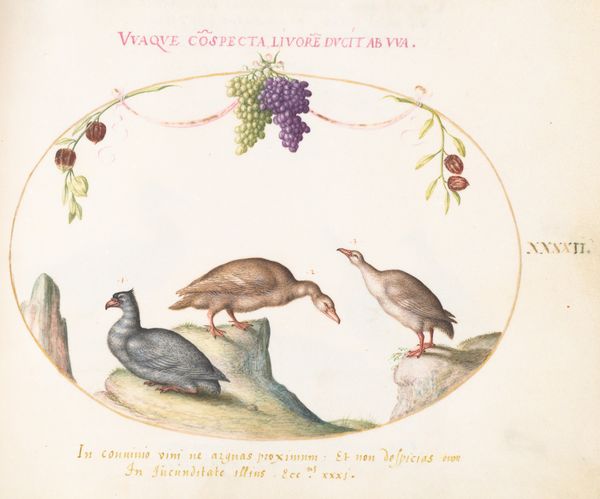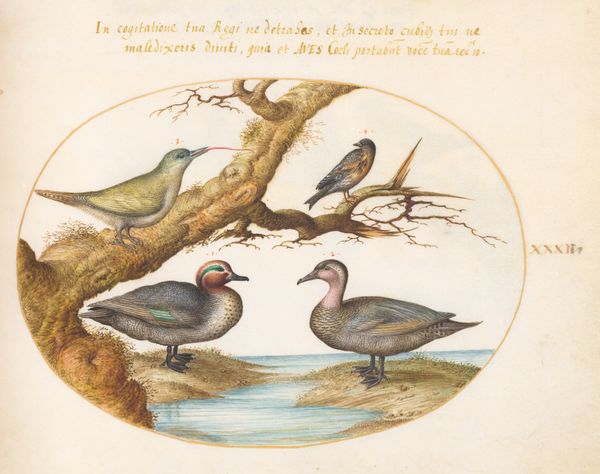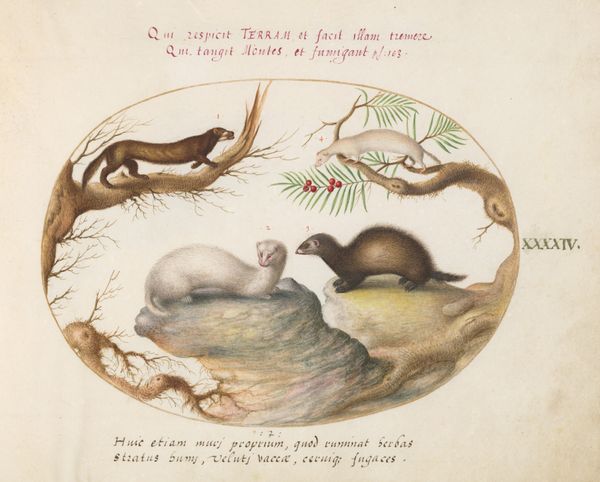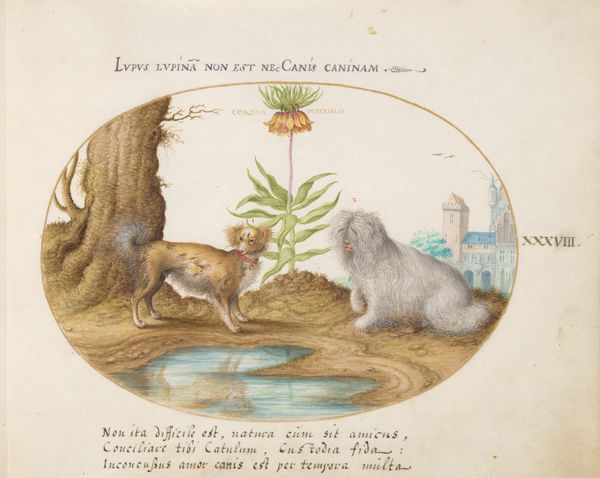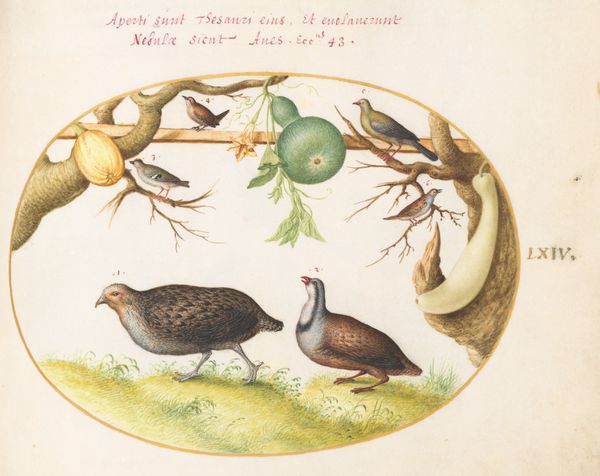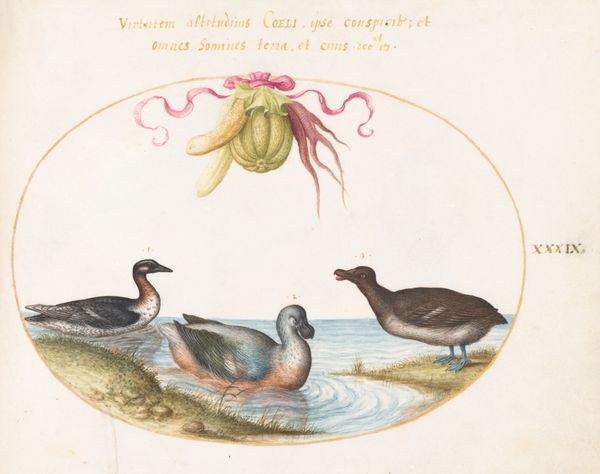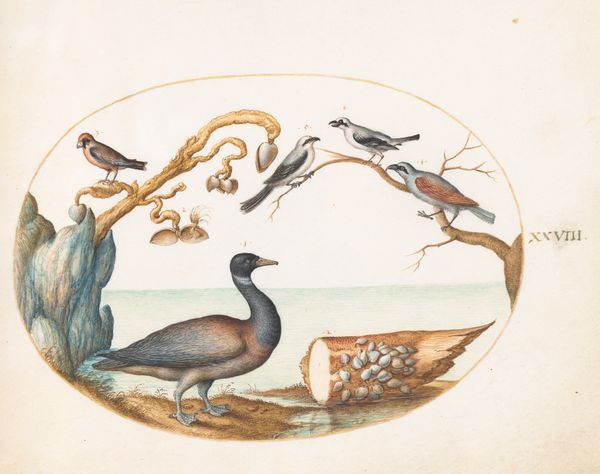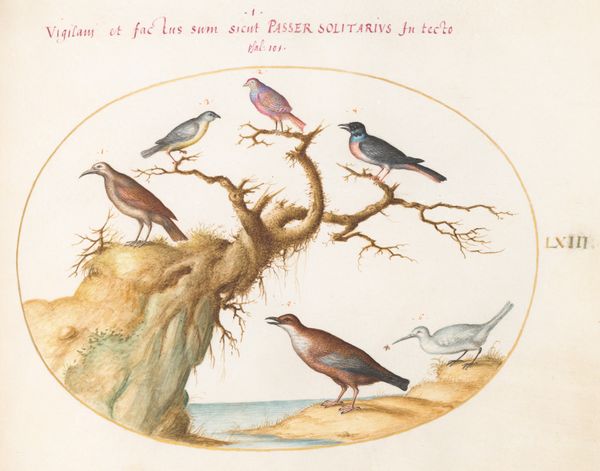
Plate 43: Mongoose and Badger with Fruit Trees c. 1575 - 1580
0:00
0:00
drawing, coloured-pencil, watercolor
#
drawing
#
coloured-pencil
#
water colours
#
11_renaissance
#
watercolor
#
coloured pencil
#
botanical art
Dimensions: page size (approximate): 14.3 x 18.4 cm (5 5/8 x 7 1/4 in.)
Copyright: National Gallery of Art: CC0 1.0
Curator: Here we have "Plate 43: Mongoose and Badger with Fruit Trees," created by Joris Hoefnagel around 1575-1580. It's a marvel of colored pencil and watercolor. What are your initial impressions? Editor: It feels like an illustration from a bestiary, almost like an illuminated manuscript page. There's a quiet harmony here, but also a slightly unsettling sense of observation, like nature carefully cataloged. Curator: I'm struck by the way Hoefnagel handles materiality here. He's using watercolours and coloured pencils, media that inherently lend themselves to detail and precision. It allows him to really delve into the textural qualities of the animals' fur and the sheen of the fruit. Think of the labour involved, not just to create the drawing but to source and mix those colours! Editor: Indeed. The badger, especially, embodies the medieval concept of "sett," symbolizing home, protection, and a sort of earthy stability. And look at the mongoose; that slinky body, juxtaposed with the badger, is quite striking. Perhaps the contrast between predator and a creature content within its own domain? Curator: I see that. For me it is not just about the animals, though, it is about the conditions that have produced them. Consider Hoefnagel working under patronage, the availability of pigments and paper in 16th-century Europe, the burgeoning interest in natural history… each element contributed to this exquisite final product. Editor: But isn’t that interplay deliberate? Fruit is the source of much symbolic associations with nature; consider for instance how apples might represent temptation. I cannot look at this image without acknowledging it has far more beyond botanical illustration. Curator: Well, each contributes to the understanding of 16th-century art and science, doesn't it? Considering the social circumstances that produce art as "high," not merely a craftsperson's endeavor is central to how to approach Hoefnagel. Editor: I suppose so. Seeing the composition reminds us how such artful imagery served not just a decorative purpose, but provided insights to the observer. Curator: This detailed study gives much food for thought and helps to reframe such images in their full complexity, more than decoration, something so heavily impacted by social conditions. Editor: And so it reminds us that these captivating illustrations can hold numerous interpretations, continuing to entice and instruct us today.
Comments
No comments
Be the first to comment and join the conversation on the ultimate creative platform.
